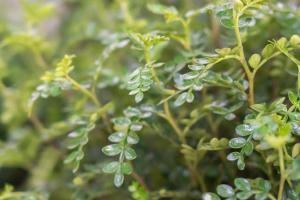Introduction
Fall is an excellent time to plant potted plants as the weather conditions are ideal for growth. The air is cooler and less humid, and the soil is still warm from summer, making it the perfect time for root growth. However, planting potted plants in the fall requires specific care and attention to ensure they thrive. This article will explore what happens when you plant potted plants in the fall.
Preparing the Soil
Before planting your potted plants in the fall, it is essential to prepare the soil. First, clear away any debris, rocks, or weeds. Then, loosen the soil to a depth of about six inches with a garden fork or tiller. Mix in organic matter such as compost and aged manure, which will provide the necessary nutrients for the plants. It is also recommended to check the pH level of the soil as some plants thrive in acidic soil while others prefer alkaline soil.
Choosing the Right Plants
Choosing the right plants to plant in the fall is crucial to their success. Plants that are able to tolerate cooler temperatures are ideal for fall planting. Some popular options include pansies, mums, asters, and flowering kale. It is essential to research and choose plants that are suitable for your climate and soil type. Additionally, ensure the plants you choose are healthy, disease-free, and have a well-developed root system.
Planting Potted Plants in the Fall
When planting potted plants in the fall, it is important to follow specific steps to ensure their success. First, water the potted plant thoroughly before removing it from its container. Then, gently remove the plant from the pot and prune any damaged or diseased roots. Using a sharp knife, make a couple of vertical cuts on the root ball to promote root growth. Place the plant in the hole and backfill with soil, ensuring there are no air pockets. Water the plant thoroughly after planting to promote root establishment.
Caring for Potted Plants in the Fall
Caring for your potted plants is critical to their success. Once planted, ensure the plants receive enough water to keep the soil moist, but not waterlogged. Do not let the soil dry out completely. Additionally, mulch around the plants to maintain consistent soil temperature and moisture levels. Regularly monitor the plants for signs of disease or pests and take appropriate action if needed.
Conclusion
Planting potted plants in the fall is an excellent way to add color and beauty to your garden. By following the steps outlined in this article, you can ensure your potted plants thrive during the fall season. Remember to prepare the soil, choose the right plants, plant them correctly, and care for them regularly. With proper care, your potted plants will provide a stunning display of color and beauty throughout the fall season.

 how many times do yo...
how many times do yo... how many planted tre...
how many planted tre... how many pine trees ...
how many pine trees ... how many pecan trees...
how many pecan trees... how many plants comp...
how many plants comp... how many plants can ...
how many plants can ... how many plants and ...
how many plants and ... how many pepper plan...
how many pepper plan...
































